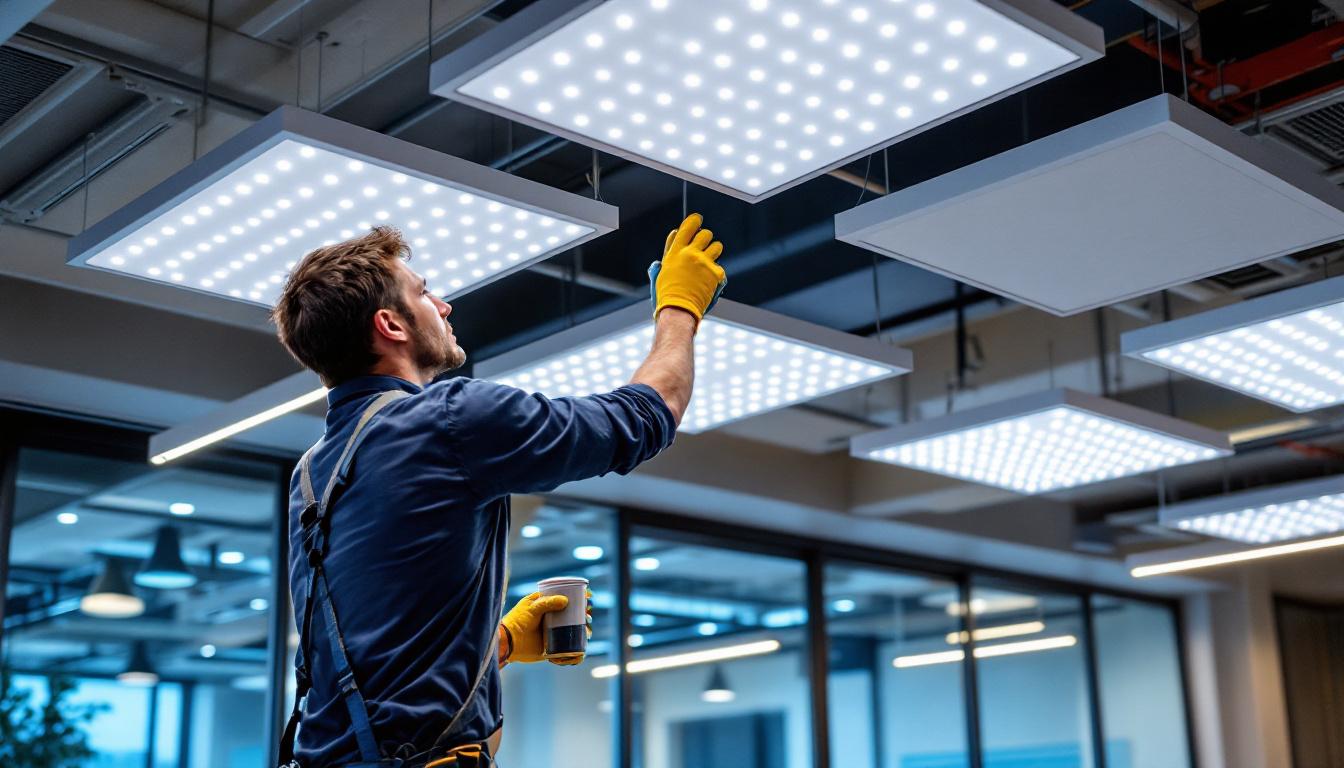
In the ever-evolving world of lighting technology, the integration of light sensors into switch systems has emerged as a game-changer for both residential and commercial applications. For lighting contractors, understanding the nuances of these devices not only enhances project outcomes but also elevates client satisfaction. This article explores the best practices for utilizing switches with light sensors, ensuring that contractors can deliver optimal solutions tailored to their clients’ needs.
Light sensors are devices designed to detect ambient light levels and adjust lighting accordingly. They can automatically turn lights on or off based on the presence or absence of natural light, contributing to energy efficiency and convenience. These sensors play a crucial role in modern smart home technology, offering homeowners a seamless integration of lighting control that enhances both comfort and functionality.
There are several types of light sensors available in the market, each serving different purposes. The most common types include:
Incorporating light sensors into lighting systems provides numerous advantages. For contractors, understanding these benefits can help in making informed recommendations to clients. The integration of light sensors can lead to significant operational cost savings, as they reduce the need for manual intervention and ensure that lights are only used when necessary.
Furthermore, the implementation of light sensors can also contribute to improved safety and security. In outdoor settings, well-lit areas deter potential intruders, while in indoor environments, occupancy sensors can illuminate pathways and staircases, reducing the risk of accidents. As technology continues to evolve, the integration of light sensors with smart home systems is becoming increasingly sophisticated, allowing for remote monitoring and control through mobile applications. This level of convenience not only enhances user engagement but also allows for personalized lighting experiences tailored to individual preferences and routines.
Proper installation of switches with light sensors is crucial for maximizing their effectiveness. Lighting contractors should adhere to the following best practices during the installation process.
Before installation, a thorough site assessment is essential. Contractors should evaluate the following:
In addition to these factors, contractors should also consider the seasonal variations in natural light. For instance, during winter months, the angle of sunlight changes, which can affect how light enters a space. Understanding these dynamics can help in selecting sensors that are more responsive to fluctuating light conditions. Furthermore, engaging with the occupants to gather insights about their daily routines can provide valuable context that enhances the effectiveness of the lighting system.
The placement of light sensors is critical for their performance. Here are some guidelines to consider:
Moreover, it’s important to consider the specific characteristics of the space when determining sensor placement. For example, in areas with high ceilings, such as warehouses or gymnasiums, specialized sensors designed for greater detection ranges may be necessary. Additionally, in spaces that have varying levels of activity, such as conference rooms or classrooms, adjustable sensitivity settings can be beneficial to prevent unnecessary lighting activation. By tailoring the installation approach to the unique needs of each environment, contractors can significantly enhance the overall efficiency and functionality of the lighting system.
Once installed, proper configuration and calibration of light sensors are essential for optimal performance. Lighting contractors should follow these steps:
Most light sensors come with adjustable sensitivity settings. Contractors should carefully calibrate these settings based on the specific environment:
After configuration, it is crucial to test the functionality of the sensors. This involves:
Regular maintenance and troubleshooting are vital to ensure the longevity and efficiency of light sensors. Contractors should educate clients on the following practices:
Encourage clients to conduct routine inspections of their lighting systems. This includes:
Even with proper installation and maintenance, issues may arise. Common problems include:
Effective communication with clients is essential for ensuring they understand the benefits and functionality of switches with light sensors. Contractors should consider the following strategies:
After installation, provide clients with clear and concise instructions on how to operate and maintain their new lighting system. This can include:
Educate clients on the potential energy savings associated with light sensors. Providing data or case studies demonstrating reduced energy consumption can help clients appreciate the value of their investment.
The lighting industry is continuously evolving, with new technologies and innovations emerging regularly. Lighting contractors should stay informed about the latest trends and advancements in light sensor technology.
Participating in industry conferences and trade shows can provide valuable insights into emerging technologies. These events often feature:
Subscribing to industry publications and online resources can help contractors stay updated on the latest trends, best practices, and product reviews. This knowledge can be instrumental in making informed decisions for clients.
Incorporating switches with light sensors into lighting designs offers numerous benefits, from energy efficiency to enhanced user experience. By following best practices for installation, configuration, maintenance, and client education, lighting contractors can ensure successful outcomes for their projects. Staying informed about industry trends and advancements will further empower contractors to provide cutting-edge solutions that meet their clients’ evolving needs. Embracing these practices not only enhances the quality of work but also fosters long-term relationships with clients, paving the way for future opportunities in the dynamic world of lighting technology.
Ready to take your lighting projects to the next level? At LumenWholesale, we provide lighting contractors with the highest quality, spec-grade lighting products at prices that can’t be beaten. Say goodbye to middleman markups and hello to a vast selection of reliable lighting solutions that meet strict industry standards. With the added convenience of free shipping on bulk orders, LumenWholesale is your go-to source for premium lighting without the premium price tag. Elevate your lighting designs today and discover the best value in wholesale lighting at LumenWholesale.

Discover how LED ceiling panels are revolutionizing the lighting industry, offering contractors enhanced efficiency, energy savings, and innovative design possibilities.

Discover innovative cost-saving strategies for lighting contractors focusing on power cables.

Discover how duplex outlets can transform lighting contractors’ projects by enhancing efficiency and safety.

Discover how top lighting contractors distinguish themselves with expert installation of ceiling can light covers.